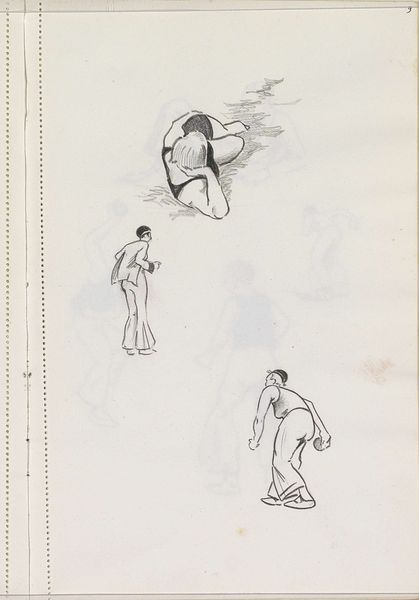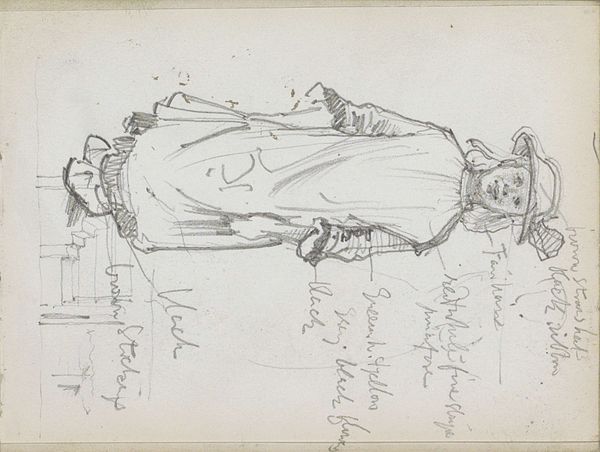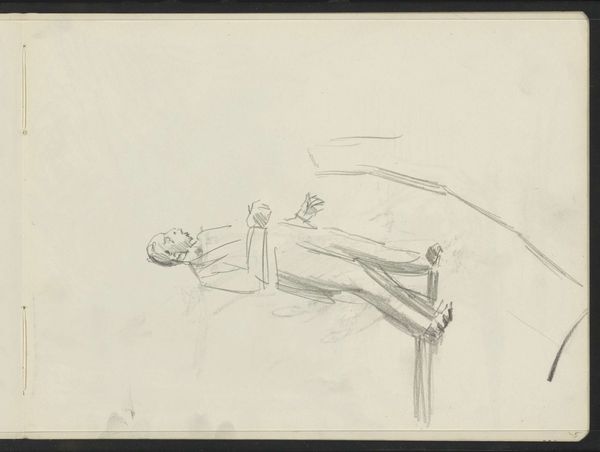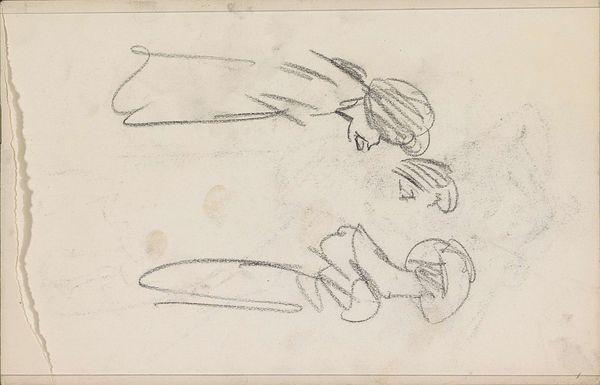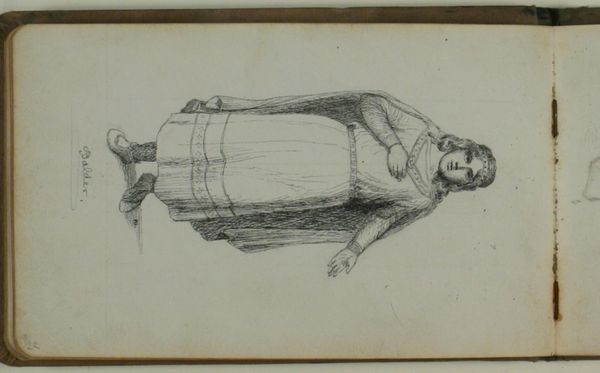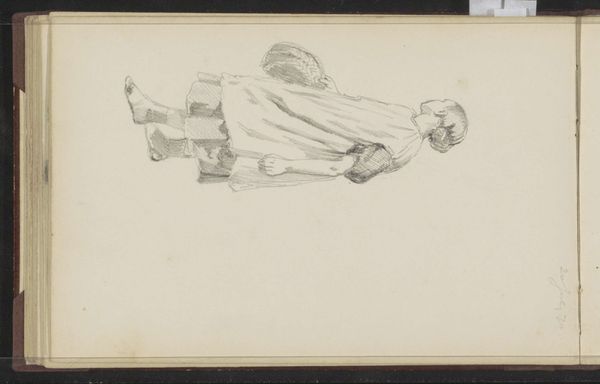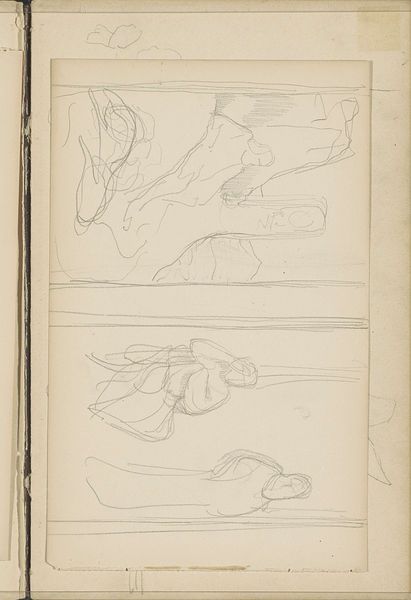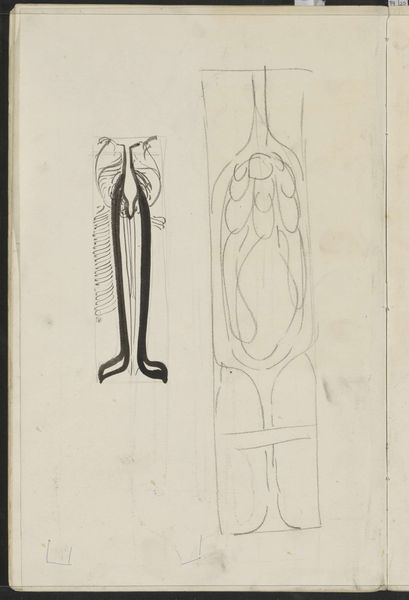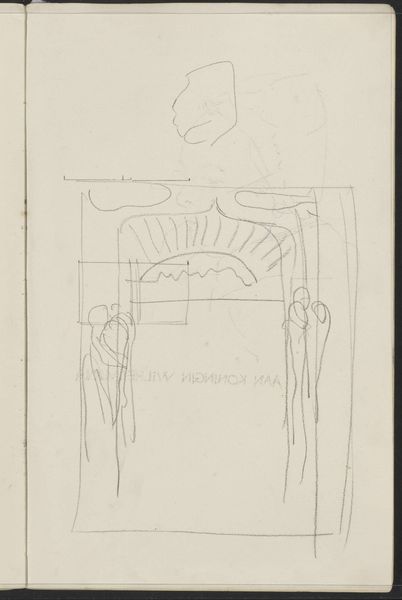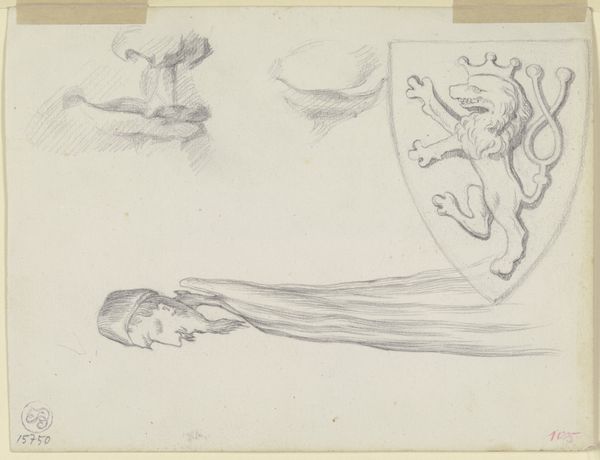
Dimensions: image: 131 x 193 mm
Copyright: CC-BY-NC-ND 4.0 DEED, Photo: Tate
Curator: This is John Flaxman's drawing, "Hypocrites," part of his illustrations for Dante's Divine Comedy. It’s held at the Tate. Editor: It’s stark. The draped figures, the prone body... there's a heavy air of despair and disillusionment. Curator: Flaxman was deeply involved in the Neoclassical movement, emphasizing clean lines, and that interest informs the simplicity of the composition. Note the engraving process, allowing for wide dissemination and relating it to printmaking traditions. Editor: The cowled figures absolutely dominate the scene. They evoke a sense of religious authority, but their blank anonymity implies something sinister. Perhaps they signify the inner emptiness of the hypocrite? Curator: Absolutely. The drapery itself is also a key element, obscuring the labor behind constructing these deceptive façades. Editor: And the way the figure is pinned—an allusion to sacrifice, perhaps—underscores the spiritual cost of hypocrisy, its betrayal of sacred values. Curator: Examining Flaxman’s social context, these prints circulated among a burgeoning middle class, hungry for moral instruction, and a sense of visual literacy. Editor: It's a powerful statement, and the enduring symbolism of the cloaked figures really resonates even today. Curator: Indeed, seeing its function within a network of production and consumption gives us a complete sense of Flaxman's intent.
